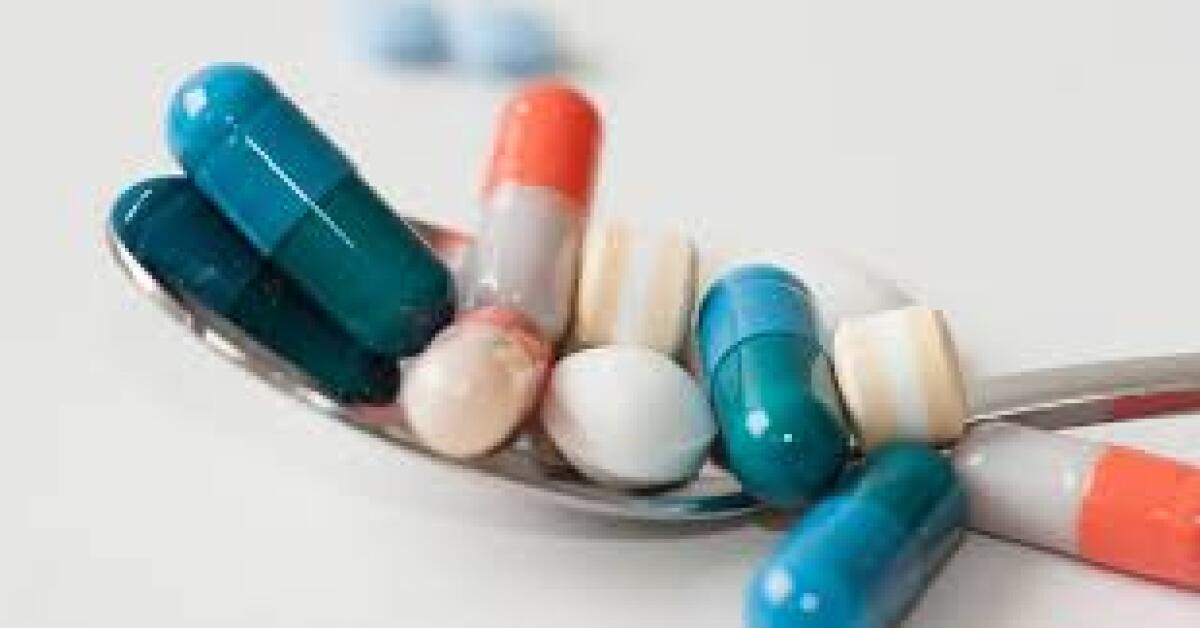The Tough Choices Behind the UK Government’s Standoff with Big Pharma

<div class="lightbulb-box"> <b>Key Takeaways</b> <ul> <li>The government’s rebate scheme caps growth in NHS spending on branded drugs to protect budgets.</li> <li>Pharmaceutical firms argue that the caps suppress innovation and make the UK a less attractive market.</li> <li>Independent analysis shows NHS services produce more health benefit per pound than high-priced new drugs.</li> <li>Evidence suggests investment decisions depend more on research talent and tax policy than on local drug prices.</li> </ul> </div>
As the dispute between the government and pharmaceutical giants deepens, the debate over how much the NHS should pay for new branded medicines exposes a difficult balancing act — between public health budgets, private innovation, and political pressure.
Introduction
A quiet but consequential dispute has been simmering between the UK government and pharmaceutical companies. At the centre is a simple but politically explosive question: how much should the NHS pay for new branded medicines?
The Department of Health and Social Care (DHSC) has been clashing with the industry over the so-called “clawback” mechanism — a rebate that requires drugmakers to return part of their profits if NHS medicine spending rises faster than agreed.
Several companies have publicly criticised the policy, warning that it will deter investment in Britain’s life sciences sector. Some have even threatened to withdraw certain products from the UK market — worrying both patients and policymakers.
But the government insists the system is essential to keep the NHS’s drug bill under control and protect taxpayers. Behind the headlines lies a broader debate about how modern health systems should balance innovation incentives with affordability.
How the NHS Controls Drug Spending
As a single national purchaser of medicines, the NHS wields enormous bargaining power. It uses two main tools to control costs:
- The National Institute for Health and Care Excellence (NICE) – which assesses whether new treatments offer enough extra health benefit to justify their price; and
- Pricing agreements with pharmaceutical firms – most recently the Voluntary Scheme for Branded Medicines Pricing, Access and Growth (VPAG).
NICE and the Price of a Healthy Year
Created in 1999, NICE evaluates new treatments using a metric known as the Quality-Adjusted Life Year (QALY) — a way to quantify how many extra years of life in “full health” a treatment can provide.
Under NICE’s standard method, a drug should not cost more than £30,000 per QALY gained compared to existing treatments. That threshold has remained unchanged for over two decades, even as inflation and research costs have risen.
Drug companies argue the threshold is outdated and should be increased. But economists increasingly suggest the opposite: that £30,000 may be too high.
Studies show the NHS typically produces one QALY for every £6,000 to £15,000 spent through its existing services, such as GP care or routine surgeries. This means that approving a drug costing £30,000 per patient per year might displace treatments that deliver twice as much overall health benefit elsewhere in the system.
In short, every pound spent on an expensive new medicine is a pound not spent on another service that could help more patients. NICE’s role, then, is to ensure that the limited NHS budget delivers the greatest possible health gain.
Branded Medicine Rebates: The VPAG Explained
The second control mechanism is the Voluntary Scheme for Branded Medicines Pricing, Access and Growth (VPAG) — the focus of the current dispute.
The VPAG caps how quickly NHS spending on branded medicines can rise each year. The limit was set at 2% for 2024, 3.75% for 2025, and 4% by 2027.
If total sales exceed the cap, drug companies must repay the excess to the DHSC in the form of a rebate. In 2024, strong demand for new treatments meant that branded medicine sales grew faster than expected — triggering rebates worth roughly £3.5 billion.
Pharmaceutical companies call this system an unfair “tax” on innovation. But the DHSC sees it differently: a necessary check on runaway costs in a system where drug prices are protected by patents and shielded from normal market competition.
Why Rebates Exist
Unlike most products, the marginal cost of producing one more dose of a patented medicine is tiny. The real expense lies in research and development (R&D).
Once a drug is on the market, companies can charge high prices during the patent period to recoup those costs — and earn a profit. But if sales volumes exceed expectations, the company’s total returns can rise dramatically without any increase in production costs.
The VPAG rebate ensures that when this happens, some of the excess profit flows back to the public purse.
The scheme also includes safeguards: newly authorised drugs are exempt from rebates for three years, and smaller firms with annual sales below £30 million receive additional allowances. In effect, VPAG functions as a balancing mechanism — protecting the NHS budget while allowing companies to earn reasonable returns on innovation.
Has the NHS Really Squeezed Big Pharma?
Industry bodies argue that, once inflation is considered, their total income from branded medicines has flatlined since 2014.
From the industry’s viewpoint, that signals a stagnant market. But from the NHS’s perspective, it shows that cost controls have successfully contained spending growth in one of the fastest-rising areas of healthcare expenditure.
Another way to see it: every time a high-priced patented drug loses exclusivity, cheaper generic or biosimilar versions enter the market. The UK now fills over 80% of primary-care prescriptions with generic drugs — one of the highest rates in the world.
This constant cycle of generic replacement frees up resources for newer treatments. So, even though branded-drug revenues have remained steady, patients still gain access to cutting-edge therapies. The system, while imperfect, achieves a balance between innovation and affordability.
Investment Threats and Economic Reality
In recent months, several pharmaceutical firms have threatened to scale back or cancel planned UK investments if the government refuses to relax its pricing controls.
However, there is little evidence that medicine prices directly determine where companies choose to locate their research or manufacturing operations.
The UK represents a small share of global drug sales, so NHS price negotiations have limited impact on global revenue streams. More importantly, location decisions tend to hinge on other factors:
- Tax policy and R&D incentives;
- Access to skilled scientific talent; and
- Quality of local research institutions and regulatory frameworks.
A landmark 2007 study for the UK government and the Association of the British Pharmaceutical Industry found that the most important driver of R&D investment was the ability to “do good science” — not local drug prices. That finding remains true today.
The International Context
The origins of this global pricing tension can be traced, in part, to former US President Donald Trump’s “most favoured nation” policy, which aimed to prevent drug companies from charging American consumers more than those in other countries.
Rather than lowering prices in the US, that policy encouraged companies to raise prices elsewhere, including in Europe. The UK’s firm stance on maintaining its cost controls can therefore be seen as an effort to resist external inflationary pressures in a globalised pharmaceutical market.
Why Price Controls Matter
If the government conceded to industry demands for a £2.5 billion annual uplift — roughly half of the DHSC’s planned real-terms budget increase for next year — the NHS would be forced to divert funds away from other urgent priorities such as GP services, cancer screening, and surgical backlogs.
Given the health service’s finite resources, spending more on drugs that offer modest benefits would mean spending less on treatments that save more lives.
Maintaining strong price controls is not about punishing innovation; it is about maximising public health benefit per pound spent. Without these controls, the NHS would risk becoming a passive price-taker in a global market dominated by corporate pricing power.
The Broader Policy Picture
The UK government has repeatedly positioned life sciences as a pillar of economic growth. Yet a sustainable partnership between the NHS and industry depends on shared accountability.
To maintain that balance, policymakers need to:
- Defend the integrity of NICE’s cost-effectiveness framework;
- Preserve the VPAG rebate structure, with room for minor adjustments if necessary;
- Continue investing in UK science infrastructure and workforce skills; and
- Coordinate international efforts to prevent global price inflation in pharmaceuticals.
At the same time, government rhetoric about making the UK “open for innovation” must not translate into an open cheque book for industry lobbying.
Conclusion: A Test of Priorities
The dispute between the government and “Big Pharma” is not simply about profit margins or bureaucratic rules. It is a test of national priorities — whether the UK values affordable access to medicines as much as it values pharmaceutical investment.
The NHS’s purchasing power is one of its greatest assets. Used wisely, it allows the health system to strike a difficult balance: rewarding innovation while ensuring every pound spent delivers the greatest possible benefit to patients.
If ministers stand firm, the UK can remain both a global hub for medical research and a protector of public value. If they yield, the NHS risks paying more for less — at a time when every pound, and every patient, counts.
<p><a div style="text-align:center;"><a class="button arrow-button large"class="button large" href="https://www.parachutelaw.co.uk/contact">Contact Us Now</a></p>
Related Reading:
2025 Standard Crime Contract: Welcome Packs, Key Changes, and Resources for Providers


